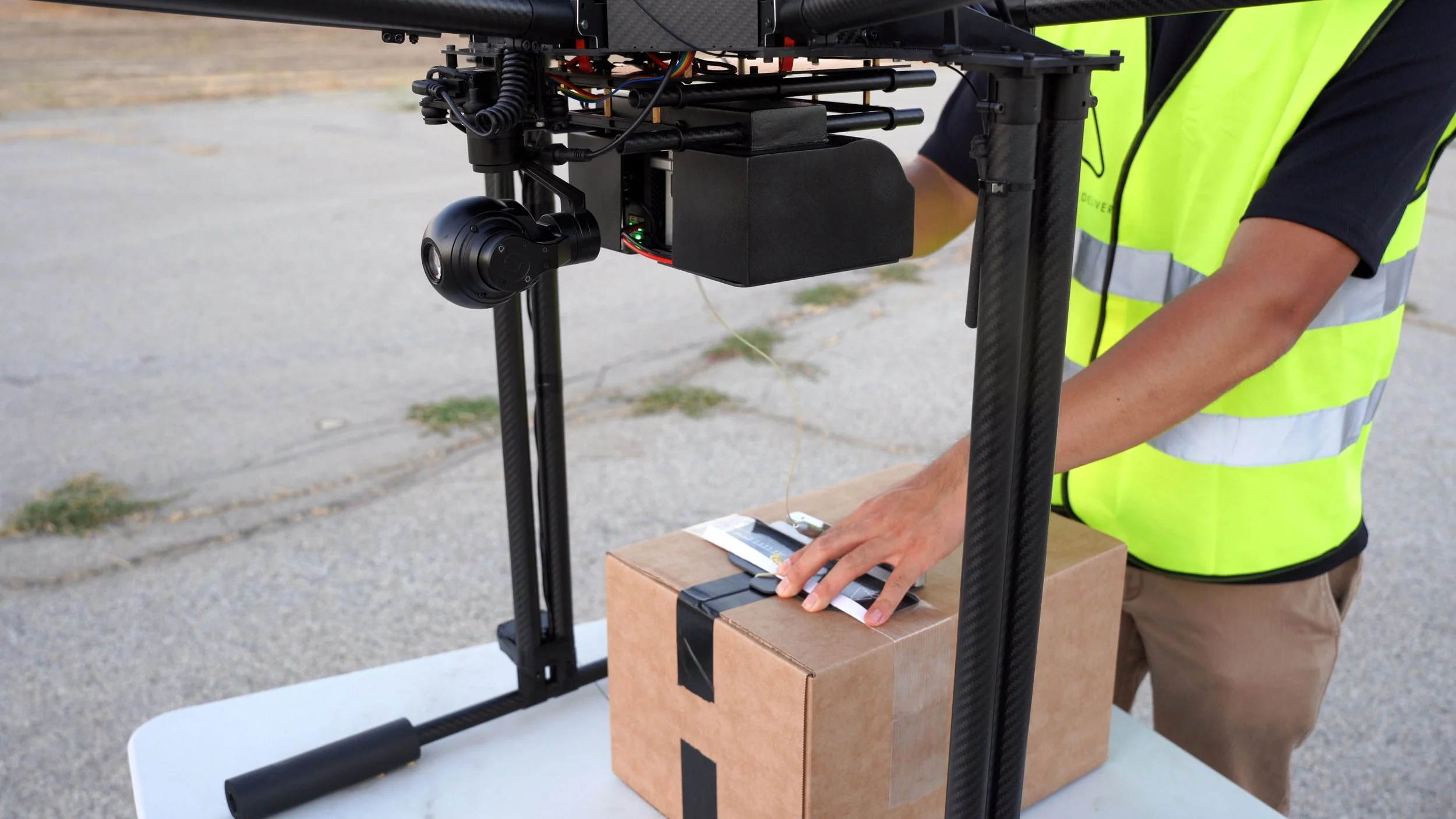The Evolution of the A2Z Payload Auto-Release Mechanism
For drone delivery to continue to expand as a reliable and trusted part of our logistics operations, parcels must be safely deposited on the ground whether a recipient is available to collect it or not. Throughout the sector, those leading the charge to expand drone delivery have taken drastically different approaches to completing these final few meters of the delivery process. Some have chosen to drop payloads from altitude via parachute, while others fly low to the ground and simply freefall the package to the ground.
We have eschewed the inherent safety and accuracy uncertainties in either of these approaches.
A2Z Controls Payload Descent
Here at A2Z Drone Delivery, we’ve developed a tethered delivery system that is safer and more accurate than the alternatives. Our delivery drone hovers high above its delivery point, keeping spinning propellers away from people and property where there is less opportunity for an incident, and rotor noise is less obtrusive to people on the ground. We then deploy the payload safely attached to the end of our UAS winch. When the package touches down, it is automatically released before the drone rewinds its tether and continues on its mission.
Our most-advanced auto-release mechanism allows operators far more flexibility in depositing, and retrieving, parcels than any other option on the market. This oft-overlooked bit of hardware actually took quite a bit of hard work to create. The evolution of our auto-release mechanism took an interesting path.
Auto-Release V1 – A Nascent Concept
Our inaugural delivery hook was just that, a simple hook that relied on gravity to keep a specially-design box safely affixed to the tether. When a parcel arrived, a recipient needed to meet the drone, and remove the payload box from the hook. This rudimentary solution got the job done, but it required the recipient to interact with the delivery drone, which introduces the potential for human error.
Auto-Release V2 – Improved Safety
The second iteration of our auto-release mechanism employed a spade-like plate that fit into the handle on our specially-designed payload boxes. Once on location, the drone winch would descend, and the spade would automatically slide from the payload handle as the package touched down. To allow operators to collect packages from the field, we provided a swappable payload hook that could be lowered to the customer to hang a payload box for collection. While this mechanism meant that we could deposit payloads without human interaction, it did not allow much flexibility for the drone operator to collect parcels.
Auto-Release V3 – Expanded Functionality and Reliability
The third generation of our auto-release mechanism took some giant leaps forward. First it combined the auto-release delivery mount and retrieval hook into a single component. This meant the same drone could conduct both operations on a single trip. Additionally, the gravity-reliant mounts were upgraded to spring-loaded mechanisms for even more security in flight. The gen-three mechanism was also beefed up to accommodate the expanded payload capacity of our latest RDST cargo drone. With its ability to carry any off-the-shelf box, and the heaviest payloads in its category, logistics managers now have far more flexibility to fit our commercial delivery drones into their existing operations.
After years of development, and a hyper-focus on the final few meters of the delivery drone mission, the latest generation of our auto-release mechanism simply provides the most flexible solution on the market to safely deliver and retrieve drone payloads.
The Future of Tethered Auto-Release
Of course, even these current capabilities will be expanded. The hive mind at A2Z Drone Delivery HQ is already hard at work devising the next evolution of our tethered auto-release mechanism. The true future of UAS delivery will be autonomous operations. For that next benchmark to be reached, delivery drones will need to safely and reliably deposit payloads, but also retrieve return packages completely autonomously.
Just how this next evolution will come to life will be the exciting part of the journey.



